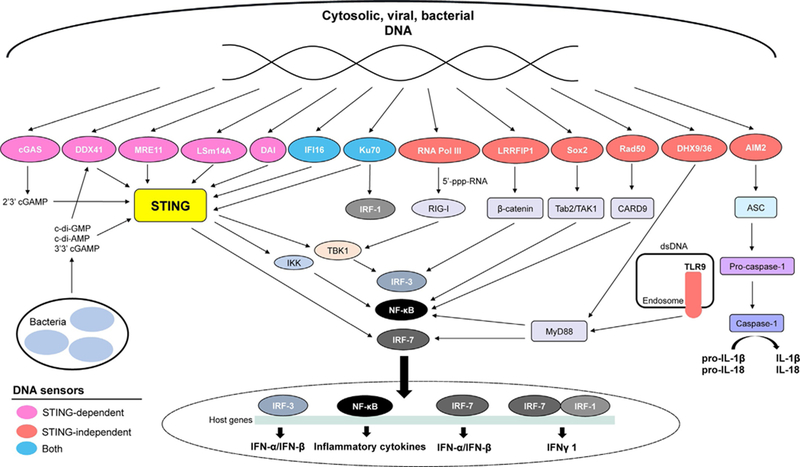Fig. 2.
Sensing of cytosolic DNA or cyclic dinucleotides via multiple sensors leads through the induction of interferon and proinflammatory cytokines. Cytosolic DNA derived from viral or bacterial infection (see Table 3), as well as self-DNA, is sensed by receptors that signal through STING (pink), receptors that are independent of STING (red), and receptors that signal via STING-dependent or -independent mechanisms (blue). STING binds to cyclic dinucleotides, by-products of some bacterial infection and also metabolized by cGAS upon binding to dsDNA. While AIM2 leads to caspase and inflammasome activation, DNA-mediated activation of the other receptors leads to IRF or NF-κB transcription factor activation and the induction of IFN and proinflammatory cytokines. Dysfunction or hyperactivation of these DNA-sensing pathways can lead to autoimmunity (see Table 4).

